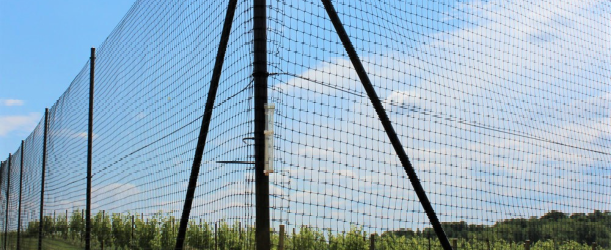Deer Fencing: Buyer’s Guide
Whether you are new to the idea of deer fencing or need a little more information about how to plan for a deer fence and the materials you will need, our Buyer’s Guide will provide you with information about our products and links to purchase the materials you require.
2 Things To Keep In Mind When Buying Deer Fencing
Select Your Fence Type

A poly deer fence is the best yard fencing for homeowners experiencing light to moderate deer pressure on properties. But, don’t let the plastic fence mesh fool you. Plastic deer fencing offers superior garden protection against deer and will last 10-20 years through all weather patterns and seasons. This type of fence is strong; but not against chewing rodents and critters that can cause serious garden damage.

A metal deer fence is a better choice for growers who are dealing with chewing animals and heavy deer pressure. For gardeners and farmers that see a high amount of deer on landscapes, including coyotes; foxes; wolves; rabbits; and groundhogs, a steel fence is the way to go. Livestock owners of cattle, horses and other farm animals choose metal fencing, as well as electric wire for livestock animal protection. Unlike traditional hexagonal fences on chicken wire, having PVC on a steel fence will add a secondary layer of protection that will protect the steel core. Having PVC-coating allows the fence to stay even stronger, lasting between 20-40 years in all weather environments.
Select Your Supplies

Here are the fence materials you need to build garden fence from Deerbusters.com:
If you are ready to build a solid security system for your garden, Deerbusters recommends getting a deer fence kit, complete with all the fence materials and accessories needed for ultimate garden protection. In addition to the poly or metal deer fence rolls, fence installers should consider adding a gate, fence tensioning, ground stakes, warning banners, corners and end systems.

Fence Posts
Deerbusters HD round line posts are made from galvanized steel to match the exterior of the fence. Fence line posts should be installed every 15-20 feet for best stability.

Fence Corners and Ends
Fence corner and end systems combine strength with stability. Ends are used when the fence terminates against the wall of a house or other structure, and Corner Systems are especially needed for added stability when the fence is longer than 100 feet.

Gates
Deer fence access gates are used to conveniently enter-or-exit a small garden area. Access gate assembly is easy; and kits include the gate frame, leaf, latches and tensioning.

Fence Tensioning Kits
Monofilament wire adds security and can be placed on the top and bottom of the fence to increase longevity of the fence. Use either 8 gauge or 12 gauge monofilament tensioning.

Ground Stakes
Stake down the fence with ground stakes for added garden security to stop digging deer from sneaking underneath the fence. There are two types of ground stakes: Kinked Ground Stakes and Rebar Ground Stakes are the fence stakes for sale on Deerbusters.com. If you are an avid camper, Kinked Ground Stakes may look similar to a camping tent stake. Kinked Ground Stakes are best used in average soils, whereas Rebar fence stakes are suggested for soils that are rocky or hard.

Warning Banners
Deer have poor vision; and if they are running, they may not detect the fence in front of them. For this reason, installers can add a warning banner every 10 feet at a height of 3-4” above the ground. Warning Banners ensure that the deer will stop before ramming into the garden fence.
Get Started Building Your Deer Fence
